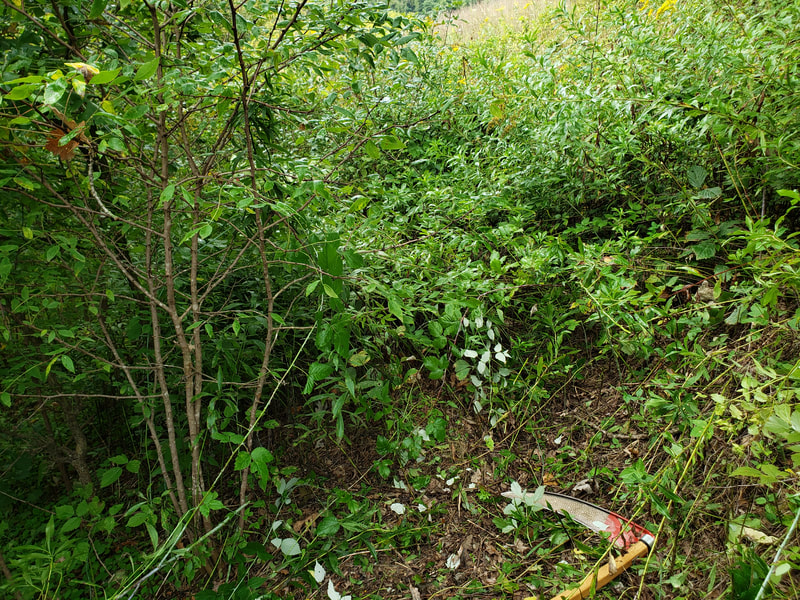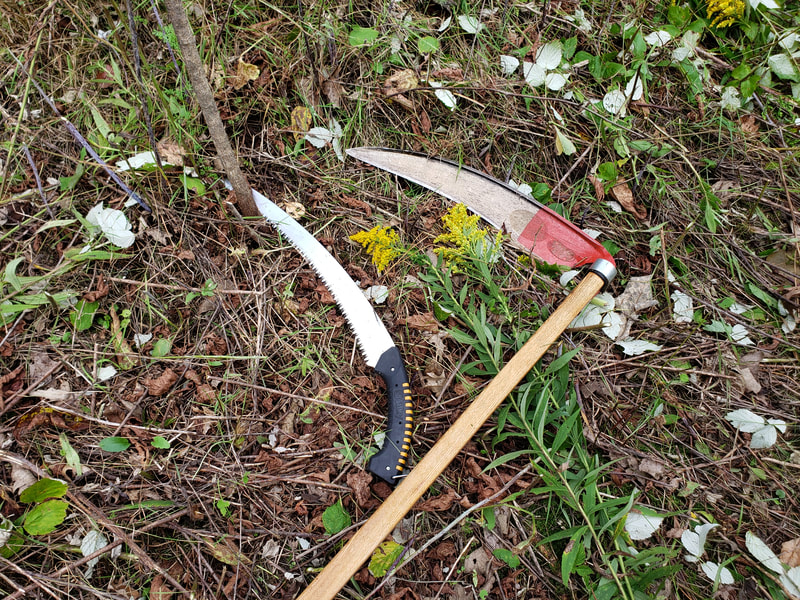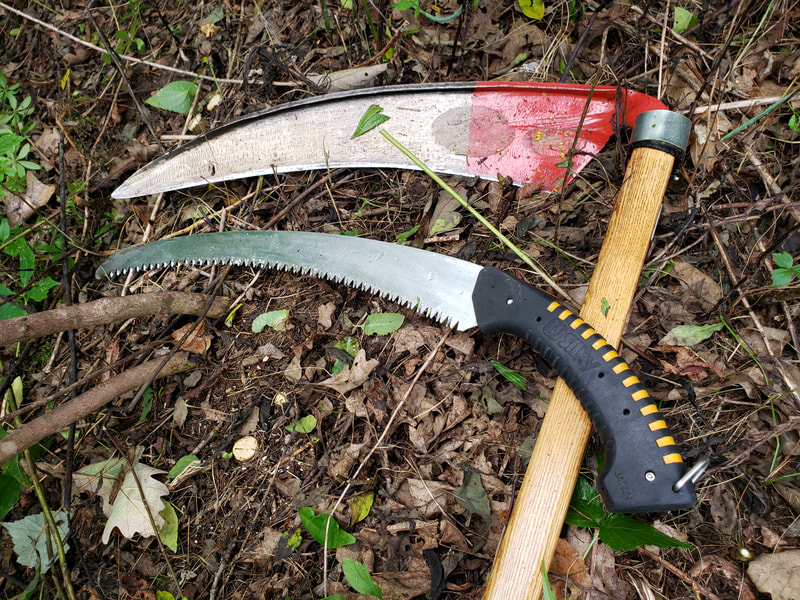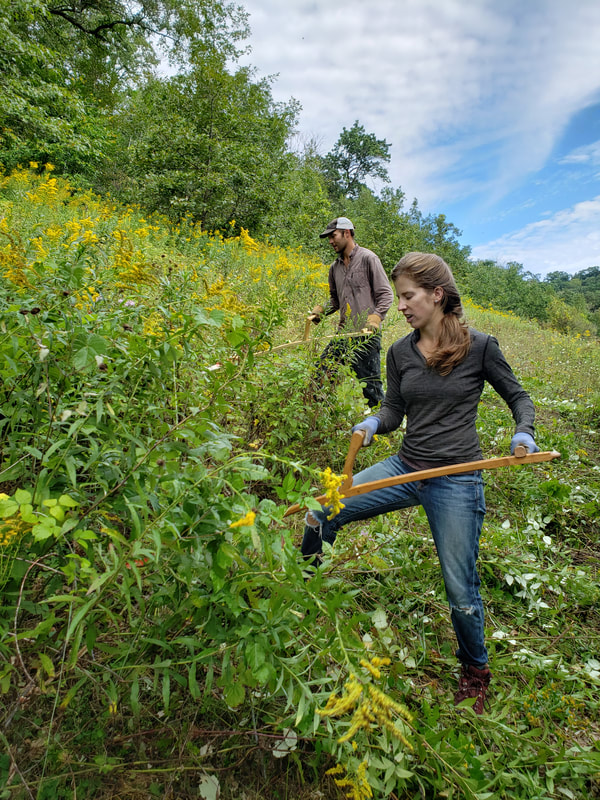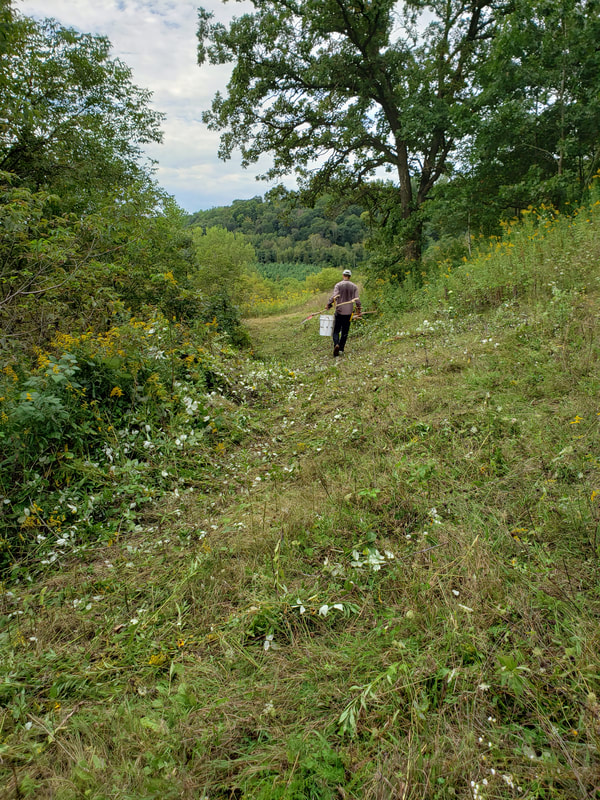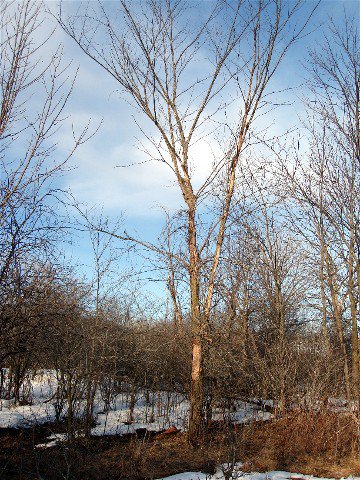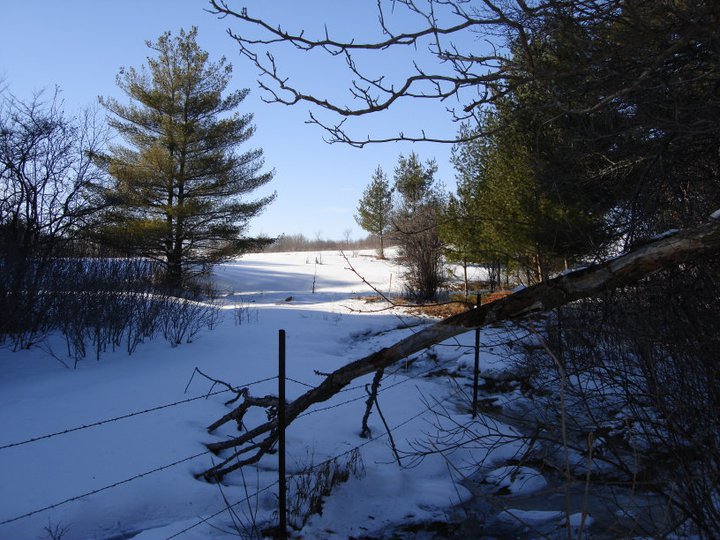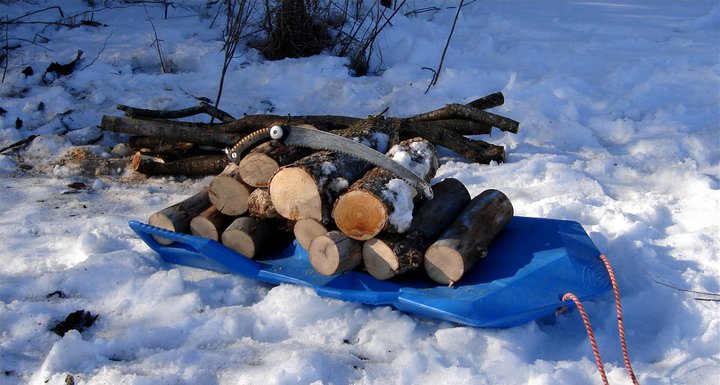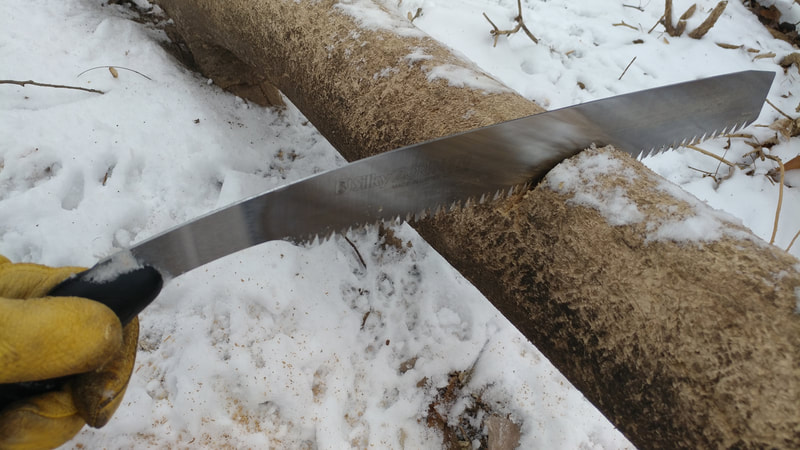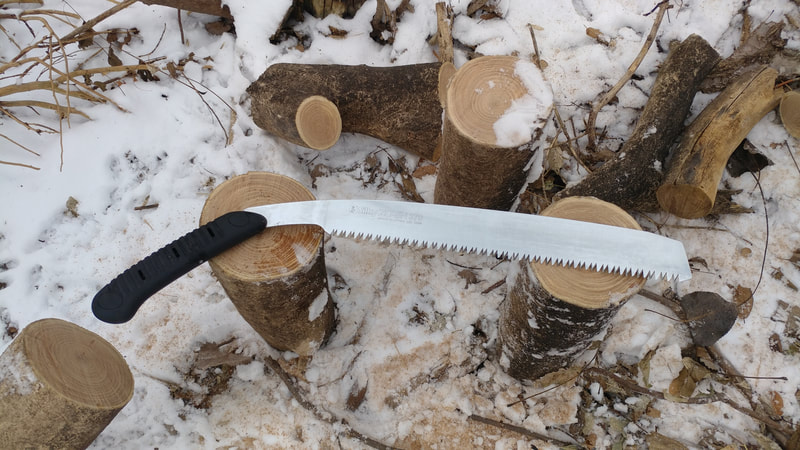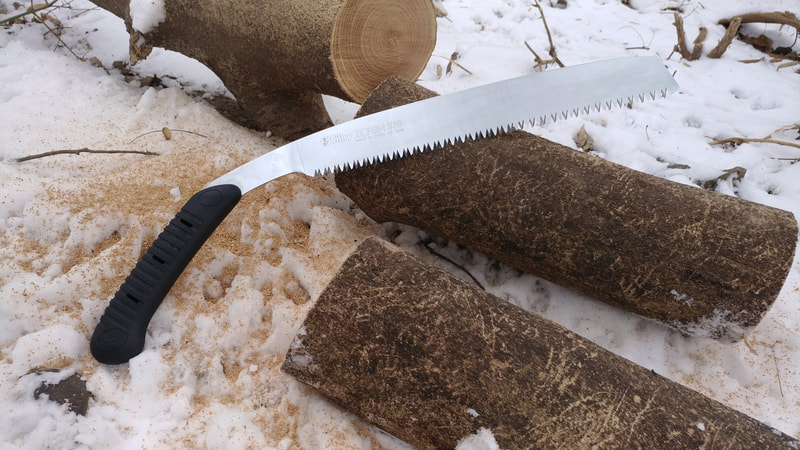Pruning Saws
I highly recommend carrying a good pruning pull-saw in a sheath on your belt, as a back-up to your light bush scythe, whenever you are clearing an area of young brush and tree seedlings. I like to have one of these pruning pull saws handy, so when I come across a tree sapling that is too big to cut with my scythe blade, I am not tempted to chop at woody stem, and possibly damage my scythe, or waste my energy. I simply pull out my pruning saw and cut the stem of the brush flush with the ground, and then keep mowing. You can get a lot done this way.
Note: It is important to cut brush as low to the ground as possible because the stem portion that remains above ground, will harden and get very tough, before it grows young shoots from it. This hardened stem can damage your grass scythe blade the next time that you mow the area. Areas that have been brush-hogged are a nightmare for scythe blades, because of the tree stubble left behind sticks up above the ground by several inches, and becomes way too tough for a scythe to cut. The young shoots that come up from that stem, however, will be tender and easy to mow, the next time, with just a grass blade. So when mowing with a bush blade try to cut tree and brush stems as close to the ground as possible, and the bigger stems that need to be sawn, cut flush with the ground, so that in the future, the grass scythe blade can slide over them and just cut the tender young stems above. Then you can easily keep mowing the young shoots it the future with your grass scythe.. If you are reclaiming an overgrown meadow, doing it right the first time and cutting off the bigger brush stems flush with the ground as you mow, will save you a lot of work and quite probably scythe blade repairs in the future. A high quality pruning saw will make this work much easier and enjoyable.
Note: It is important to cut brush as low to the ground as possible because the stem portion that remains above ground, will harden and get very tough, before it grows young shoots from it. This hardened stem can damage your grass scythe blade the next time that you mow the area. Areas that have been brush-hogged are a nightmare for scythe blades, because of the tree stubble left behind sticks up above the ground by several inches, and becomes way too tough for a scythe to cut. The young shoots that come up from that stem, however, will be tender and easy to mow, the next time, with just a grass blade. So when mowing with a bush blade try to cut tree and brush stems as close to the ground as possible, and the bigger stems that need to be sawn, cut flush with the ground, so that in the future, the grass scythe blade can slide over them and just cut the tender young stems above. Then you can easily keep mowing the young shoots it the future with your grass scythe.. If you are reclaiming an overgrown meadow, doing it right the first time and cutting off the bigger brush stems flush with the ground as you mow, will save you a lot of work and quite probably scythe blade repairs in the future. A high quality pruning saw will make this work much easier and enjoyable.
Falci Profesional Pruning Saw 350
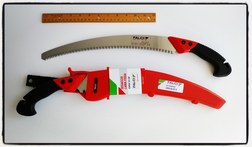
This is a great little pull saw. Especially for the price! 35cm blade This curved pull-saw quickly and smoothly cuts through branches up to 2-3 in diameter. Comes with a study and light weight plastic sheath, so you can easily carry it with you on your belt when you are out working with your bush scythe. Best for fresh wood. - One saw with sheath- $30 out-of-stock
Silky Zubat Pruning Saw 330 7.5
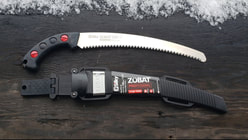
330mm (13") long blade. 7.5 teeth per 30mm (6.4 teeth per inch) Fast cutting. Compact and powerful. This saw is a great back up to the light bush blade. There are lots of reviews of this little saw on YouTube. Designed to cut on pull stroke. Best for green wood.
Silky Saws Australia has created some very informative videos for silky saws. - $95
Silky Saws Australia has created some very informative videos for silky saws. - $95
Silky Sugoi Pruning Saw 360
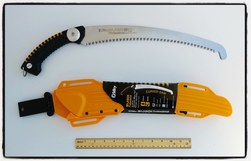
Sugoi means awesome in Japanese. Nicknamed the "human powered chain-saw", this saw is indeed awesome! 36cm long blade. The curve of the blade keeps the teeth aggressively engaged on a pull stroke. Great for pruning. The crisp sharp teeth leave a glass smooth finish on the surface of the cut of the branch. Great for coppicing and pollarding. Great for buckthorn removal. I also like it for sawing up branchwood for bio-char. I recommend this saw mainly for green saplings and branches up to 3-4 inches max in diameter, but I have used it to fell and saw up entire dead elm trees. It is a lot of work, but doable. We have a lot of young elms here in Wisconsin, that die of Dutch Elm Disease when they are about 6"-8" in diameter at the base. I have cut them down, and sawn up the entire tree. The trunk for firewood, and the branches for bio-char. I like to carry this saw as a back-up to my light bush blade scythe, when clearing brushy areas. Best for fresh wood. -$115
Silky Zorin Mountain Saw 370
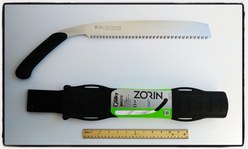
Zorin means "Create forest." This powerful mini logsaw takes some skill and strength to use well. The straight saw blade requires a more fine-tuned sense of alignment with the straight blade, to keep it at the correct cutting angle. Keep your hand high on the grip when sawing with one hand, to get the angle correct. I often hold the metal neck between the blade and the rubber grip, between my thumb and forefinger. The teeth on this blade makes a wider cut than the pruning saw blades above and kicks out a lot of sawdust, hence it takes more strength for bigger diameter branches, but it also makes it surprisingly quick! The extra long handle is for pulling with two hands. Can be used one handed for smaller branches and two handed for larger ones. More and more as I get used to this saw, it is becoming the saw that I take with me for processing deadfall branch wood for firewood and biochar. I also like it for making back cuts when felling small trees, 6-8 inches in diameter. Silky Saws Australia has created some very informative videos for Silky saws. - $110 out-of-stock (It seems that Silky discontinued making this saw.)
